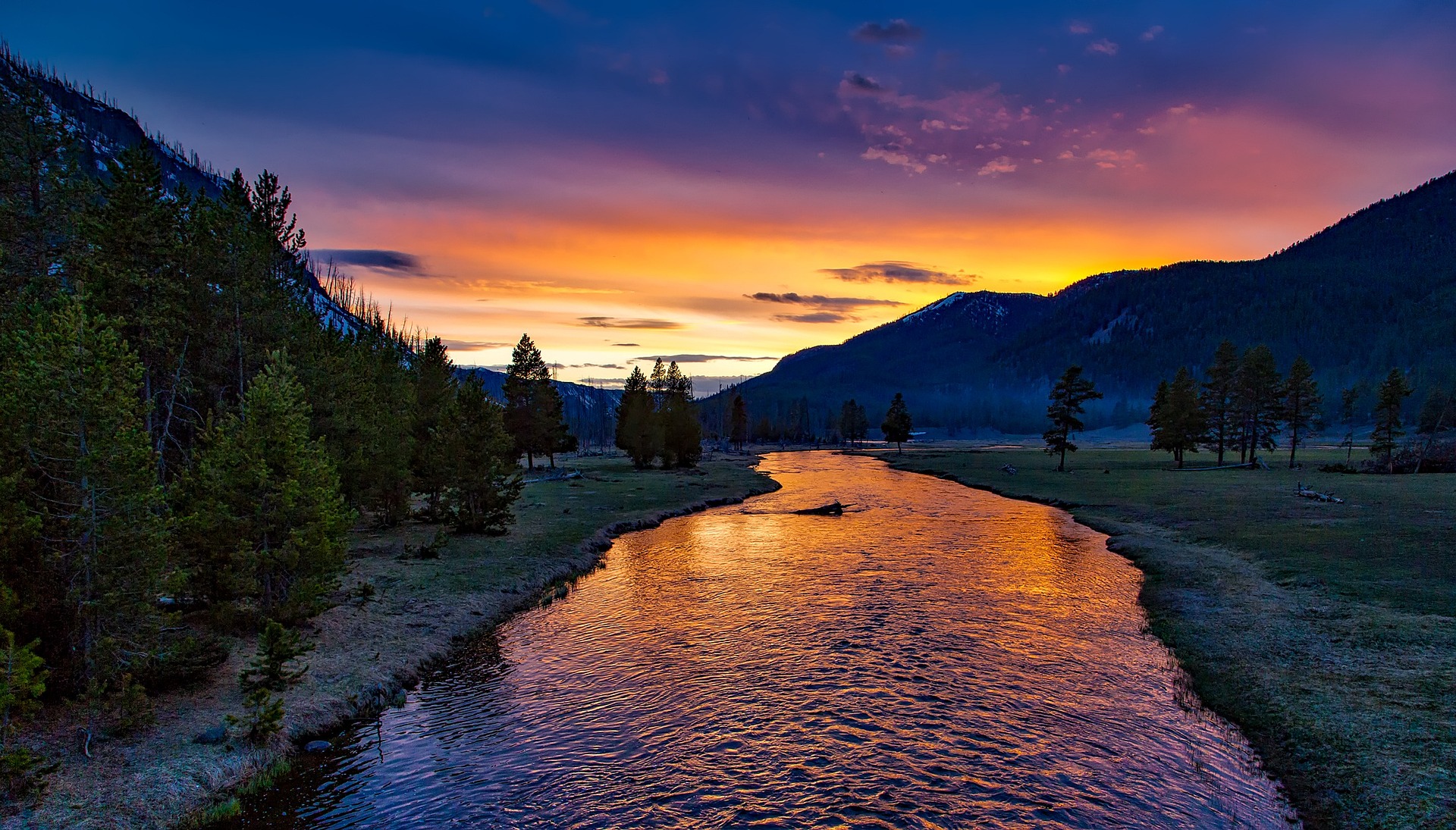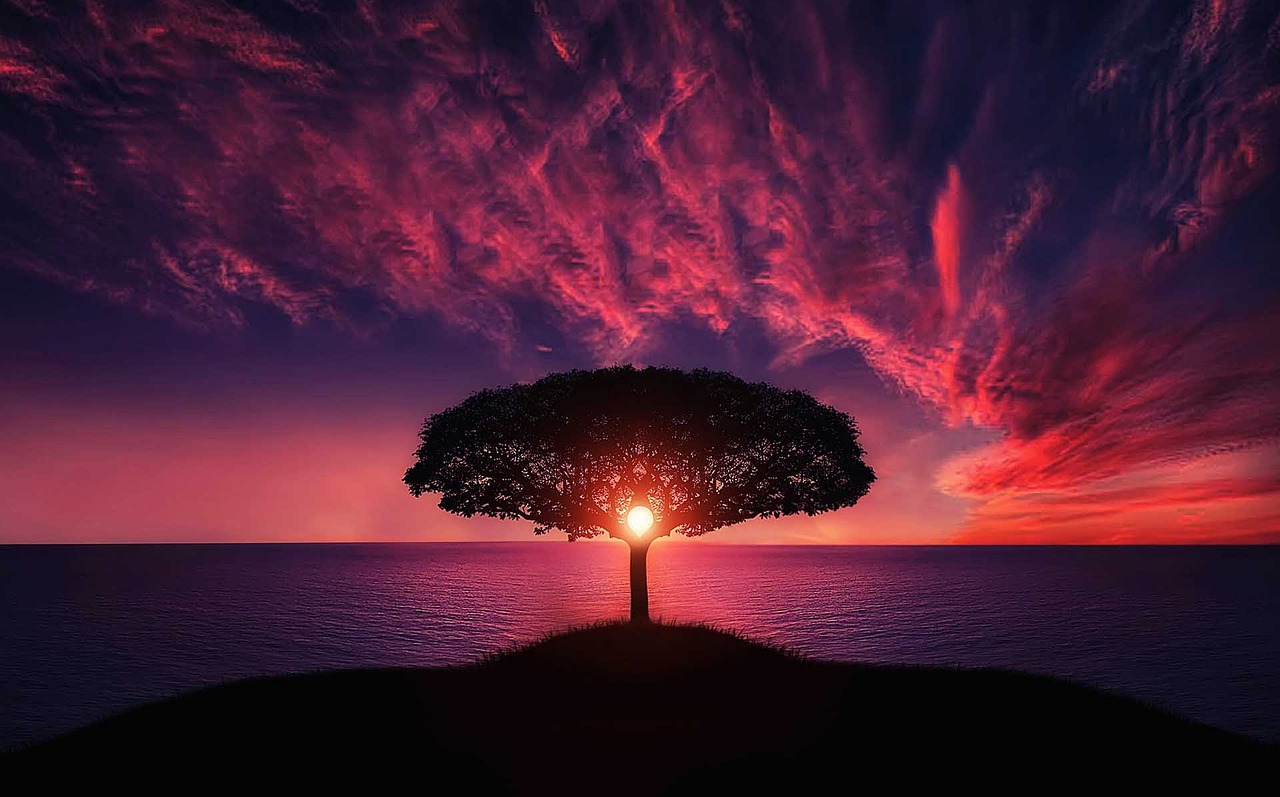Stardust and Eternity – 3.2.4
Twilight
Day and night do not abruptly alternate after Sun falls below the horizon and is no longer directly visible: they are separated by a gradual, elusive and rather extended period, which is known as “twilight”. During twilight, the sky is only partially illuminated. This phenomenon stems from the fact that the Earth’s upper atmosphere partially scatters and refracts the sunrays that illuminate the lower atmosphere and the Earth’s surface. The brightness of the twilight depends mainly on how much the Sun is below the horizon. In fact twilight is maximum just after sunset. The brightness of the sky at twilight can be classified into three main categories – depending on local solar elevation angle, i.e. the position of the Sun’s centre relative to the horizon line.
Civil twilight is the first category into which the brightness of the twilight sky can be classified. It corresponds to the time span during which – under clear weather conditions – terrestrial objects are still clearly visible to the human eye; natural light is sufficient and artificial illumination is not required. In the evening, civil twilight begins at sunset and ends when the center of the Sun is 6 degrees below the horizon. Conversely, in the morning, it begins when the centre of the Sun is 6 degrees below the horizon and ends at sunrise.
The second category is the one of Nautical twilight – the period of time in which only general outlines of terrestrial objects are visible to the human eye. In this case, the two limiting angles of solar elevation are 6 and 12 degrees below the horizon.
The last category, Astronomical twilight, corresponds to the period of time when the level of illumination is low enough to make astronomical objects in the sky easily observable – ignoring possible sources of light pollution; the two limiting solar elevation angles are 12 and 18 degrees below the horizon. This twilight phase is suitable for the observation of both northern lights – or “aurorae borealis” – and the zodiacal light. The “astronomical nighttime” phase occurs after astronomical twilight. The elevation angle of the Sun is less than 18 degrees below the horizon. During astronomical nighttime, indirect light from the Sun is not visible and even the faintest celestial objects are visible – if light pollution and local weather allow it.
The duration of these phases depends on both the latitude and the time of the year. The twilight observed at equatorial and tropical regions tends to be shorter than at high latitudes. For instance, at the equator, during equinoxes, the Sun crosses the horizon almost perpendicularly at sunrise or sunset, thus producing a fast transition between night and day: this translates into relatively short twilight periods. At higher latitudes, conversely, the Sun crosses the horizon with a tilted inclination – thus lengthening the twilight phases. At very high latitudes, around the summer solstice, the Sun does not even move more than 18 degrees below the horizon: therefore, twilight can last all night. In summer, within the polar circles, there is no twilight because the Sun does not even set below the horizon.

Further Resources
Links below will redirect you to external websites. In accordance with the European data protection declarations, we would like to point out that by clicking on these links you may send data to external providers. We cannot prevent that.
Images
![]() Twilight explained in one image (Leigh cousins RAW)
Twilight explained in one image (Leigh cousins RAW)
Videos
![]() Golden hour and twilight: civil, nautical and astronomical – Timelapse
Golden hour and twilight: civil, nautical and astronomical – Timelapse
 Come cambia il colore della luce a cavallo fra tramonto e crepuscolo, dall’ora oro all’ora blu (Geo – Rai 3)
Come cambia il colore della luce a cavallo fra tramonto e crepuscolo, dall’ora oro all’ora blu (Geo – Rai 3)
 Vista sul nuovo lungomare di RIMINI / Time-lapse Crepuscolo e Albeggio (SG – video)
Vista sul nuovo lungomare di RIMINI / Time-lapse Crepuscolo e Albeggio (SG – video)
Online Resources
![]() Twilight (Explaining Science)
Twilight (Explaining Science)
![]() An astronomer’s guide to twilight (BBC)
An astronomer’s guide to twilight (BBC)
![]() What is astronomical twilight? (Space.com)
What is astronomical twilight? (Space.com)
 Capire il crepuscolo: alba e tramonto, ora d’oro e ora blu (Star Walk)
Capire il crepuscolo: alba e tramonto, ora d’oro e ora blu (Star Walk)
 Il crepuscolo, civile ed astronomico (Nautica.it)
Il crepuscolo, civile ed astronomico (Nautica.it)
 Il Crepuscolo (Coleum Astronomia)
Il Crepuscolo (Coleum Astronomia)
 I colori del crepuscolo (EduINAF)
I colori del crepuscolo (EduINAF)
Further Readings
![]() Out of the Blue: A 24-Hour Skywatcher’s Guide (John Naylor)
Out of the Blue: A 24-Hour Skywatcher’s Guide (John Naylor)
![]() Lights in the Sky (M. Maunder)
Lights in the Sky (M. Maunder)
Teaching Material
 Tabella calcolo online orario alba tramonto
Tabella calcolo online orario alba tramonto
For Kids

